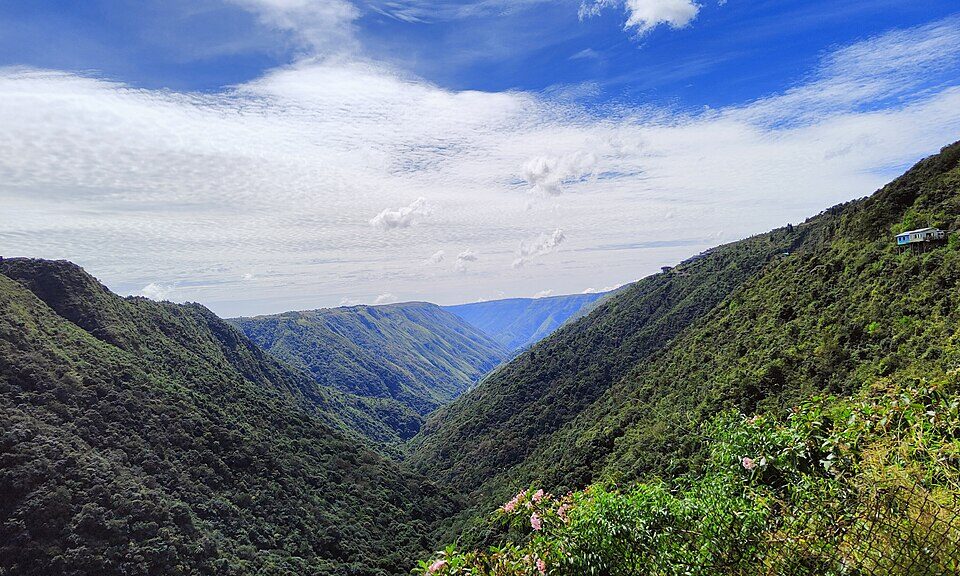India is a land of diversity, and nowhere is this more evident than in its northeastern region, home to the Seven Sisters of India. This term refers to the seven contiguous states of Arunachal Pradesh, Assam, Meghalaya, Manipur, Mizoram, Nagaland, and Tripura, each unique yet bound together by geographical proximity, historical ties, and cultural richness. Nestled in the lap of the Himalayas and bordered by Bhutan, China, Myanmar, and Bangladesh, these states are a treasure trove of natural beauty, indigenous traditions, and unexplored potential.
The Origin of the Name
The term “Seven Sisters of India” was coined in 1972 by journalist Jyoti Prasad Saikia during the inauguration of the new states of the Northeast. He emphasized the interdependence of these states and described them as sisters who need to stand together. Over time, this nickname became the popular way to refer to the region, highlighting its collective identity in Indian culture and geography.
1. Arunachal Pradesh – The Land of the Rising Sun
Arunachal Pradesh is the easternmost state of India and the first to greet the rising sun. Covered with dense forests, alpine meadows, and rivers, it is home to 26 major tribes and over 100 sub-tribes, each with its own language, customs, and festivals.
Key Attractions:
- Tawang Monastery, the second-largest monastery in the world.
- Ziro Valley, famous for its lush paddy fields and the Apatani tribal culture.
- Namdapha National Park, a biodiversity hotspot.
Despite its natural wealth, Arunachal remains one of the least explored parts of India, offering an unspoiled paradise for eco-tourists and adventure seekers.
2. Assam – The Gateway to the Northeast
Assam, the most accessible and populous of the seven sisters, is known for its rolling tea gardens, the mighty Brahmaputra River, and its cultural vibrancy. It serves as a commercial and logistical hub for the entire Northeast.
Key Attractions:
- Kaziranga National Park, home to the one-horned rhinoceros.
- Majuli Island, the world’s largest river island and a center of neo-Vaishnavite culture.
- Assam Tea Estates, which produce globally renowned tea.
Assam’s Bihu festival, classical Sattriya dance, and the Assamese silk industry add to its unique charm.
3. Meghalaya – The Abode of Clouds
True to its name, Meghalaya is a state where clouds kiss the hills, waterfalls flow in abundance, and caves lie hidden beneath the earth. The state is inhabited mainly by the Khasi, Garo, and Jaintia tribes.
Key Attractions:
- Cherrapunji and Mawsynram, two of the wettest places on earth.
- Living Root Bridges, marvels of bioengineering formed over centuries.
- Dawki River, famous for its crystal-clear waters.
Meghalaya is also noted for its matrilineal society, where women inherit property and carry forward the family name.
4. Manipur – The Jewel of the East
Manipur is often described as the “Jewel of India” for its scenic landscapes and rich cultural heritage. It is the birthplace of the classical Manipuri dance and the modern game of polo.
Key Attractions:
- Loktak Lake, India’s only floating lake with phumdis (floating islands).
- Kangla Fort, the historic heart of the Meitei kingdom.
- Ima Keithel, Asia’s largest all-women-run market.
Manipuri handlooms, martial arts, and folk dances reflect the deeply artistic soul of this state.
5. Mizoram – The Land of the Highlanders
Mizoram is a mountainous state with dramatic landscapes, steep hills, and tranquil villages. The Mizos, known for their music and hospitality, form the majority of the population.
Key Attractions:
- Phawngpui (Blue Mountain), the highest peak in Mizoram.
- Reiek Heritage Village, which showcases traditional Mizo life.
- Aizawl, the picturesque capital built on a ridge.
Mizoram is one of the most literate states in India, and its society is known for discipline, cleanliness, and community cooperation.
6. Nagaland – The Land of Festivals
Nagaland is a vibrant mosaic of tribes, each with distinct customs, attire, and dialects. Known as the “Land of Festivals,” every month in Nagaland is a celebration of tribal unity and ancestral legacy.
Key Attractions:
- Hornbill Festival, a week-long cultural extravaganza held in December.
- Dzukou Valley, famed for its lush greenery and wildflowers.
- Kohima War Cemetery, honoring soldiers who died in World War II.
Nagaland has managed to preserve its indigenous identity even while opening up to the modern world.
7. Tripura – The Royal Heritage
Tripura is one of the smallest but culturally rich states in the Northeast. Once a princely state, its legacy lives on in palaces, temples, and folk traditions.
Key Attractions:
- Ujjayanta Palace, a blend of Mughal and European architecture.
- Neermahal, a beautiful lake palace.
- Unakoti Hills, known for ancient rock-cut sculptures.
Tripura’s Bengali influence adds a unique flavor to its tribal traditions, making it a cultural bridge between Northeast and mainland India.
Why Are They Called the “7 Sisters of India”?
The term “Seven Sisters” refers to the seven Northeastern states of India:
- Arunachal Pradesh
- Assam
- Meghalaya
- Manipur
- Mizoram
- Nagaland
- Tripura
This nickname was coined in 1972 by journalist Jyoti Prasad Saikia during a radio talk show and later popularized in a book titled “The Land of the Seven Sisters.” The name was meant to reflect the geographical closeness and interdependence of these seven states, which were somewhat isolated from the rest of India—connected only through the narrow Siliguri Corridor (often called the “Chicken’s Neck”).
The term emphasizes that:
- They are connected geographically (they form a continuous landmass).
- They share historical, cultural, and ethnic ties.
- They have similar developmental and political challenges, often working together for mutual progress.
Why is Sikkim Not Included Among the 7 Sisters?
Though Sikkim is located in the Northeastern region of India, it is not considered one of the Seven Sisters for a few key reasons:
1. Geographical Separation
Sikkim does not share a border with any of the Seven Sisters. It is located north of West Bengal, whereas the Seven Sisters are to the east of West Bengal, connected only via the Siliguri Corridor.
2. Different Historical Background
- Sikkim was an independent kingdom until it became the 22nd state of India in 1975 through a democratic referendum.
- In contrast, the Seven Sisters were either part of British India or princely states that were integrated much earlier.
3. Distinct Cultural and Political Identity
Sikkim has a different ethnic composition, with dominant communities like the Lepchas, Bhutias, and Nepali-speaking people, and it follows its own unique socio-political path.
Common Threads Among the Seven Sisters
Despite their diversity, the Seven Sisters share several common features:
- Ethnic and Linguistic Diversity – Home to over 200 ethnic groups and languages.
- Strategic Geopolitical Importance – Bordered by five countries, the region plays a vital role in India’s Act East Policy.
- Underexplored Tourism Potential – Vast natural resources, wildlife sanctuaries, and cultural festivals make it an emerging tourism destination.
- Development Challenges – Difficult terrain, historical neglect, and political unrest have hindered infrastructure and economic growth.
- Youthful Population – High literacy rates and a young demographic present immense future potential.
Tourism and Sustainable Development
As connectivity improves through projects like the India-Myanmar-Thailand Trilateral Highway and new railway links, tourism is emerging as a key driver of the region’s growth. However, given the ecological sensitivity and cultural distinctiveness of the region, sustainable and responsible tourism practices are essential.
Government schemes such as ‘Ek Bharat Shreshtha Bharat’, UDAN (regional airport development), and special financial packages aim to integrate the Northeast with the rest of India. Yet, local participation, preservation of identity, and balanced development remain key concerns.
The Future of the Seven Sisters
The Seven Sisters are no longer just remote, mysterious corners of the country. They represent a rising voice in India’s developmental narrative. With increased focus on education, tourism, infrastructure, and entrepreneurship, the region is poised to become a vibrant contributor to India’s socio-economic fabric.
There is also growing national and international interest in Northeast India for its biodiversity, strategic location, and untapped talent. As more travelers, investors, and scholars turn their eyes to this region, the seven sisters are gradually stepping into the spotlight they have long deserved.
Conclusion
The Seven Sisters of India are much more than picturesque landscapes and tribal dances—they are the heartbeats of India’s eastern frontier. Rich in tradition, culture, and promise, they offer a glimpse into a different yet deeply Indian way of life. Whether you’re an intrepid traveler, a history buff, or a lover of culture, the Seven Sisters welcome you with open arms—and a world of discovery.
1st Image Credit- Sohra, Eastkhasi hills, Meghalaya

